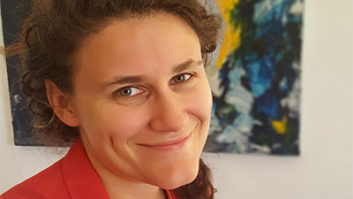
Satellite communication has a long and healthy future, argues Jan Molter, managing director, Hiltron
A curious aspect of modern life is the appearance of ever-stranger forms of transport. Perhaps the strangest this year was the free-flying hoverboard that recently carried its inventor a distance of 275 metres before pilot and craft subsided gently into a Quebec lake.
Satellite communication systems are themselves a form of transport, sending signals rather than passengers or cargo. Hiltron operates both as a satcom systems integrator and, when we can’t source the solutions we need from other companies, as a manufacturer.
Among Hiltron’s most successful innovations was the HMAM motorised antenna mount that continues to form a basis for new development. The HMAM is being shown at IBC2015 in a compact form supporting dish antennas or up to 2.7 metres diameter. We have a second version which is suitable for antennas of up to 4 metres diameter. The combined head and drive form a high-precision three-axis motorised system with 180 degrees of azimuth adjustment, 90 degrees of elevation adjustment range and fully adjustable polarisation.
The HMAM-IOT variant incorporates inclined-orbit tracking. This allows satcom service operators to reduce their financial overheads by exploiting an aspect of satellite technology of which most people are unaware. Geostationary satellites are kept in place for much of their operational life by guidance motors.
These motors operate very efficiently and can be designed to keep a satellite within a tightly defined location for many years. To conserve guidance propellant, older satellites are allowed to drift further from their nominal target position than during their main service life. Operators therefore offer greatly reduced transponder capacity pricing. The HMAM-IOT’s advanced tracking capabilities enable the antenna to follow these variations in position. It is very accountant-friendly.
HMAM systems have been supplied to clients in many countries, notably SES for integration into a Passive Correlation Ranging (PaCoRa) project. PaCoRa involves the analysis, design, implementation and validation of a fully passive and highly accurate ranger for geostationary satellites. The goals are to develop a system that provides highly accurate orbit predictions of geostationary satellites, allowing dense co-location with up to eight satellites in one orbital box.
Another Hiltron innovation is the Hiltron Control System version 4 (HCS4), the latest evolution of our HCS3 satellite-communications controller. The HCS4 provides a wide range of facilities including easy switchover between main and backup devices such as downconverters, high-power amplifiers, waveguide switching systems, MPEG digital video broadcast encoders/modulators and integrated receiver/decoders. It can also be used to power, control and monitor optical-fibre transceivers.
Returning to the transport theme, Hiltron has developed an automatic system to switch between Ku and C-band feeds in a project for the Airbus Group. Standard feeds for both bands are moved into the focus of the antenna. Depending on which feed is in the focus, the antenna receives signals in Ku or C band. This system is universal and can be used for all kind of feeds including broadcasting.
Satellite communication has a long and healthy future, offering the high degree of reliability demanded by major broadcasters and telco service providers.
4.B89







